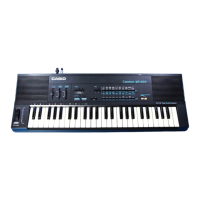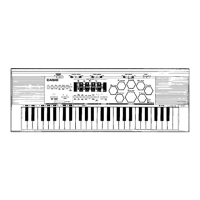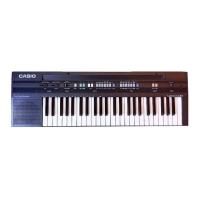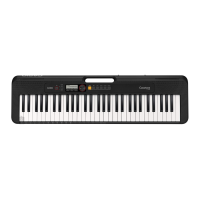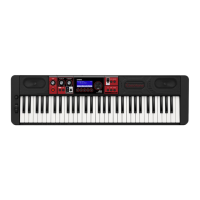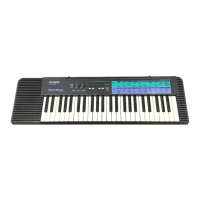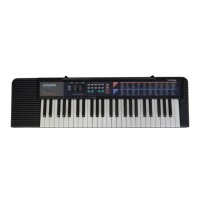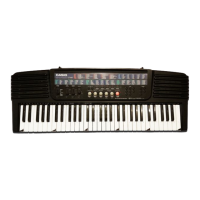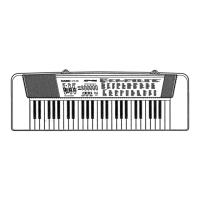Do you have a question about the Casio Casiotone MT-220 and is the answer not in the manual?
| Brand | Casio |
|---|---|
| Model | Casiotone MT-220 |
| Category | Electronic Keyboard |
| Language | English |
Detailed descriptions of the keyboard's numbered controls, buttons, and features for user operation.
Explanation of external jacks and tuning control for connectivity and pitch adjustment.
Instructions on how to connect and use optional drum pads (DP-1) and sound stick (SS-1).
Details on using and replacing dry batteries for powering the unit.
Instructions for connecting and using AC adapters and car battery adapters.
Explanation of the automatic power-off feature and cautions regarding power usage.
Important safety warnings related to AC adapters, batteries, and potential hazards.
Explanation of the power switch and volume controls for basic unit operation.
Instructions on using tone selectors and select buttons to choose instrument sounds.
Guide to selecting rhythms, controlling tempo, and using start/stop and fill-in functions.
Explanation of how to adjust super drum controls to change the rhythm pattern.
How to use the Casio Chord system for auto-accompaniment, including switch settings and chord playing techniques.
Details on adjusting the volume level for the auto-accompaniment features.
Step-by-step guide to using the one-finger method with the Casio Chord system.
Instructions for playing auto-accompaniment by forming chords as usual.
Steps for recording keyboard play into memory, including standby, start, and stop procedures.
Instructions on how to play back stored musical data from memory.
Important notes regarding memory capacity, tempo adjustments, and tone/rhythm selection during use.
Explanation of how striking drum pads produces sound and affects volume.
How to play a fill-in pattern by striking drum pads, causing rhythm accompaniment to pause.
Using drum pads or sticks to stop auto-rhythm for improvisational drum solos.
Warning against striking drum pads forcefully with sticks to prevent damage.
A table listing common problems like no sound or no rhythm, with their possible causes and remedies.
Advice on avoiding heat, humidity, sunlight, and severe impacts to protect the unit.
Guidelines for keeping the unit clean, avoiding liquids, and proper cleaning agents.
Prohibition of unit modification and advice to contact professionals for repairs.
Recommendation to remove batteries during extended periods of non-use to prevent damage.

